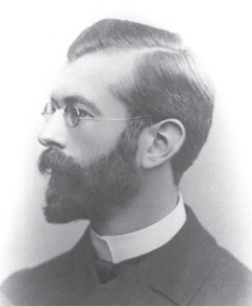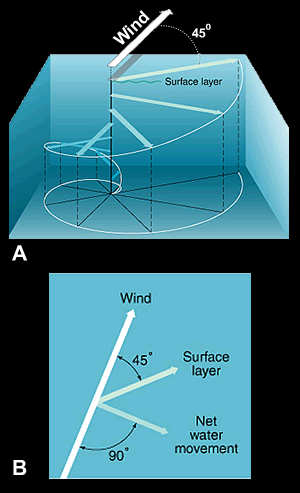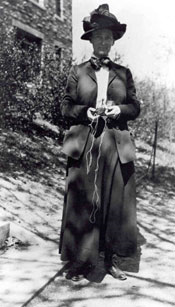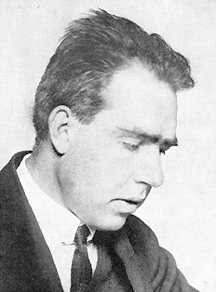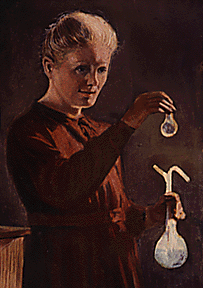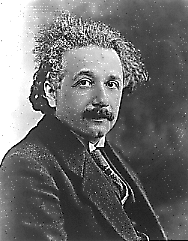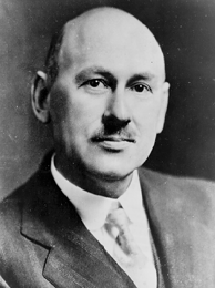Click on image for full size
Image is in Public Domain
Vagn Walfrid Ekman
Vagn Walfrid Ekman was a Swedish oceanographer who is best known for studying how the Coriolis force affects ocean currents. Originally, he was interested in trying to understand why icebergs do not drift in the direction of the prevailing wind (they drift in a direction that is 20-40 degrees off from the windís direction), and after some study he realized that this was because of the Coriolis force.Ekmanís work showed that the deflection of the icebergs can be explained by something that came to be known as the Ekman spiral. This refers to a spiral-shaped column of currents that begins with a force exerted over a horizontal boundary (as wind pushes on the horizontal boundary of sea water in the ocean). The windís force is deflected by the Coriolis effect, and the net direction of the force is shifted to the right in the northern hemisphere and to the left in the southern hemisphere. This net force pushes on the water layer below it, just as the wind originally pushed on it, and the Coriolis effect deflects this force as well, so its net direction is deflected even further from the original windís direction. This continues through additional layers of water, and at each step the new force direction is shifted a little more, so there is an overall spiral-like structure to the column of currents.
Ekmanís theory of how wind causes movement of water near the ocean surface, and how the movement of one water layer affects adjacent layers, has been expanded by many oceanographers in the past century, and the overall process of wind causing the movement of water near the surface of the ocean has come to be called Ekman transport (and the layer of water it occurs in, roughly the upper 100 meters of the ocean, is commonly called the Ekman layer). When Ekman transport occurs near a coast, it can create an upwelling of nutrient-rich water from the deeper layers of the ocean, and this creates a region that is biologically productive.
Ekman made other key contributions to oceanography, including a study of how the fresh water from melting icebergs could slow or stop ships (this is a phenomenon called Ďdead waterí). He also invented several important devices for studying the sea, such as the Ekman water bottle, which allows researchers to sample sea water temperature at different depths, and some of his inventions are still in use today.
Ekman was born in Stockholm, Sweden, on May 3, 1874. He passed away on March 9, 1954.


